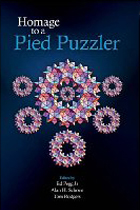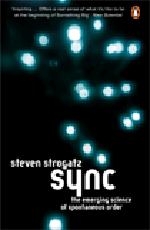book review
Imagine a biologist trying to deduce the life cycle of an unknown creature by observing it just long enough to witness four beats of its heart. Nowadays, we know the Sun follows an eleven-year cycle, so even lifelong professional astronomers are likely to witness no more than four of its pulsations. Solar astronomy is truly a multigenerational science and its beginnings are brilliantly summarised in Stuart Clark's story, built around the greatest magnetic storm ever recorded.
The housekeeper and the professor by Yoko Ogawa, translated by Stephen Snyder A novel translated from the Japanese, where nothing much happens and prime numbers play a central role, may not sound like the most relaxing summer read.
There has been a recent spate of books in honour of Martin Gardner, who has spent over half of his 95 years entertaining us with his recreational mathematics.
If the quest for a physical theory of everything, and some of the strange concepts that have sprung from it, strikes you as somewhat mystical, then this is just the book you need to explore the idea further.
It's not very often that something I read makes me want to jack in my lovely job at Plus and return to study and research. But that is just what happened when reading Sync by Steven Strogatz.
It's not often I get misty-eyed reading a book about mathematics, but that was just what happened when I read this, and several other poems, in the poetry collection Strange Attractors: Poems of love and mathematics.
The Magic Numbers of the Professor revolves around a fictional professor and a huge range of magical numbers. Written in a narrative style, the book documents a series of visits the Professor makes from America to Ireland to visit Owen O'Shea, the author of both this book and a fictional column within the story.
When Number story first landed on my desk I was struck by its prettiness. With its tasteful and slightly old-fashioned cover design, the unusually compact format for a hardback, and the unassuming title, this book clearly isn't desperate for attention. So I was intrigued to find out whether this quiet confidence is justified by its content, and I'm glad to report that it is.
We've all been there. You're in a bar with a group of friends. The night draws in. The empties pile up. The conversation turns to sublime speculation and ridiculous argument. How many golf balls would you need to circle the Earth? What's the risk of being killed by a shark? How efficient is wind power? How far does your average Premiership footballer run in a game? How can we put an end to all these questions and go home?
Symmetry abounds: the wallpaper, your chair, even your own body. Familiar types of symmetry include reflection in a line and rotation about a point. Creating a repeating pattern by translating a core segment to a new place, common in wallpaper, also counts as a symmetry, as does switching without the use of a mirror from an anticlockwise segment to one otherwise identical but oriented clockwise.
If you are interested in how medieval cathedrals came into being, and the mathematics associated with their architecture and construction, then this book is for you.
I would guess that, even a decade ago, the phrase "mathematical recreation" would have been considered a contradiction in terms. Now, in the age of compulsive Sudoku puzzlers, and an increasing canon of popular mathematics books, this descriptor has become credible.











